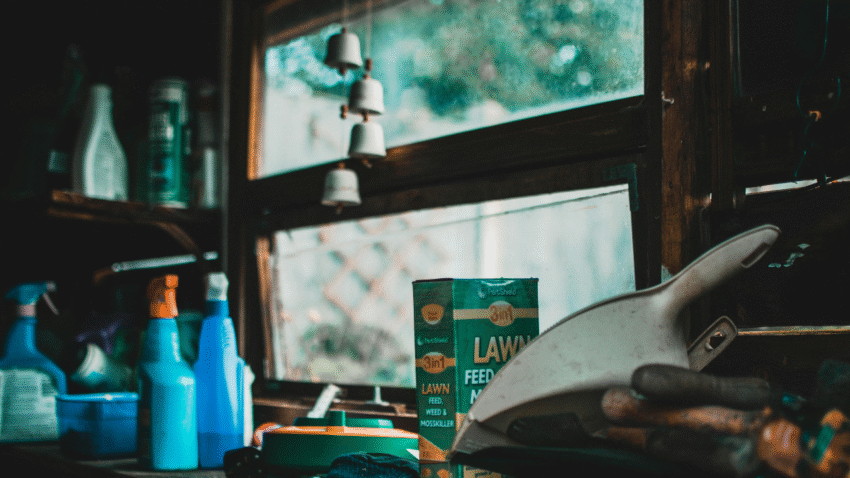Introduction
A wooden wall in your garage can bring warmth and character to the space—but without proper protection, it can also be vulnerable to dirt, moisture, and wear. Staining your garage’s wooden wall enhances its natural beauty, adds a layer of protection, and can even change its tone to match your style. In this guide, you’ll learn how to stain a wooden garage wall step-by-step, from preparation to final sealing.
Why Staining a Wooden Wall Matters for Your Garage
Wood in a garage faces unique challenges compared to indoor spaces. Staining offers several key benefits:
- Enhances appearance by deepening the natural grain or changing the wood’s color.
- Protects against moisture that can cause warping, rot, or mold.
- Reduces wear and tear in a high-traffic, working environment.
- Improves durability by sealing the surface against stains and scratches.
- Increases property appeal by giving your garage a clean, finished look.
Whether your wall is plywood, tongue-and-groove planks, or reclaimed wood, staining ensures it stays beautiful and functional for years.
Step-by-Step Guide to Staining a Wooden Garage Wall
1. Choose the Right Stain and Finish
There are different types of wood stains, each offering a distinct look and level of protection:
- Oil-based stains: Deep penetration, rich color, long-lasting protection.
- Water-based stains: Faster drying, low odor, easy cleanup.
- Gel stains: Thicker consistency for even coverage on vertical surfaces.
Select a finish based on the garage environment:
- Clear polyurethane or varnish for a natural look with protection.
- Exterior-grade sealant if the garage is exposed to temperature and humidity changes.
2. Gather Materials and Tools
Materials:
- Wood stain of your choice
- Wood conditioner (optional, for softwoods)
- Protective finish (polyurethane, varnish, or sealer)
- Painter’s tape and drop cloths
Tools:
- Sandpaper (120–220 grit) or orbital sander
- Lint-free rags or staining pads
- Paintbrush (for corners and edges)
- Stir sticks
- Safety goggles, gloves, and respirator mask
3. Prepare the Workspace
- Move tools, vehicles, and storage bins away from the wall.
- Lay drop cloths to protect the garage floor from spills.
- Ensure good ventilation—open the garage door and windows, and consider using a fan.
4. Clean and Inspect the Wall
Wipe down the wall with a damp cloth to remove dust, cobwebs, and grease. For stubborn dirt, use a mild detergent and water, then let the wall dry completely. Check for loose boards, nails, or damage, and repair before staining.
5. Sand the Surface
Sanding smooths the wood and opens the grain so the stain penetrates evenly:
- Start with 120-grit sandpaper for rough surfaces.
- Move to 180–220 grit for a smooth finish.
- Wipe away all dust with a tack cloth or vacuum with a brush attachment.
6. Apply Wood Conditioner (Optional)
For softwoods like pine or cedar, apply a wood conditioner before staining to prevent blotchy color absorption. Follow the manufacturer’s drying time before moving to the next step.
7. Apply the Stain
- Stir the stain thoroughly (don’t shake—this can create bubbles).
- Use a lint-free rag, staining pad, or brush to apply the stain in the direction of the wood grain.
- Work in small sections to ensure even coverage.
- Let the stain sit for 5–15 minutes, depending on the depth of color desired.
- Wipe off excess stain with a clean rag, again following the grain.
8. Apply Additional Coats (If Needed)
If you want a darker tone, apply additional coats after the first one dries fully (check the can for recommended drying time). Always wipe away excess to avoid a sticky finish.
9. Apply a Protective Finish
Once the stain is completely dry:
- Brush or roll on a clear polyurethane, varnish, or sealer.
- Apply 2–3 thin coats, allowing each to dry before lightly sanding with 220-grit sandpaper between coats.
- This seals the wood against moisture, dust, and impact damage.
10. Clean Up and Inspect
Dispose of rags safely—oil-based stain rags can spontaneously combust if left crumpled, so lay them flat to dry before discarding. Remove painter’s tape, put tools back in place, and admire your refreshed garage wall.
Common Mistakes to Avoid
- Skipping Surface Prep
- Problem: Stain won’t adhere evenly.
- Solution: Always sand and clean before applying stain.
- Applying Too Much Stain
- Problem: Leads to uneven color and tacky surfaces.
- Solution: Wipe off excess within the recommended time frame.
- Not Using a Conditioner on Softwoods
- Problem: Uneven, blotchy results.
- Solution: Apply a wood conditioner for consistent absorption.
- Poor Ventilation
- Problem: Fumes can be harmful and slow drying.
- Solution: Keep the area well-ventilated during the entire process.
- Skipping the Protective Finish
- Problem: The stain wears away quickly in a garage environment.
- Solution: Always seal the stain for durability.
Extra Garage Tips & Hacks
- Choose a Darker Stain for High-Use Walls: Hides marks and scuffs better than light stains.
- Use Gel Stain for Vertical Surfaces: Reduces drips and gives more control.
- Test Stain on a Scrap Piece: Ensures you get the desired color before committing to the whole wall.
- Related Tip: See our guide on how to repaint garage shelving for a fresh look to match your new wall finish with updated shelving.
Conclusion
Learning how to stain a wooden garage wall is an easy way to enhance both the beauty and functionality of your space. With proper preparation, quality materials, and a good protective finish, your wall will not only look great but also withstand the demands of a busy garage.
Bookmark this guide to keep your garage looking polished, protected, and ready for any project year-round.
